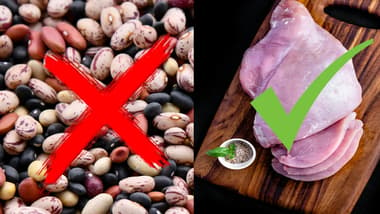Is Greek-Style Yoghurt Actually Greek Yoghurt?
If you’re after protein, Greek‑style won’t cut it; it’s often only 3-4g versus 10g per 100g in authentic strained greek yoghurt.
If you’re after protein, Greek‑style won’t cut it; it’s often only 3-4g versus 10g per 100g in authentic strained greek yoghurt.

Walk through any supermarket in Nairobi and you'll see shelves lined with "Greek-Style" yoghurt options. But here's something that might surprise you: anything with this label isn't actually Greek Yoghurt. Understanding this difference could save you money and help you make better choices for your health goals.
Authentic Greek yoghurt goes through a specific straining process that removes whey—the liquid portion of yoghurt. This traditional method, called "straining through cloth," concentrates the remaining yoghurt, creating a thicker texture and dramatically higher protein content.
The process is simple but time-consuming: regular yoghurt is placed in a fine mesh strainers or cheesecloth and left to drain for several hours. What remains is roughly half the original volume, but with double the protein concentration. This is why a 100g serving of real Greek yoghurt typically contains 8-15 grams of protein compared to 3-4 grams in regular yoghurt.
Greek-style yoghurt, on the other hand, takes a different approach entirely. Instead of straining, manufacturers add thickening agents like cornstarch, gelatin, or milk protein concentrate to regular yoghurt. This creates a similar thick texture without the time-intensive straining process.
While this method is faster and cheaper to produce, it results in a product that looks and feels like Greek yoghurt but lacks the concentrated nutrition profile. Greek-style yoghurt typically contains 3-4 grams of protein per serving— often similar to regular yoghurt, but nowhere near authentic Greek yoghurt levels.
If you're eating yoghurt primarily for protein—whether for muscle building, weight management, or general health—this difference is significant. Real Greek yoghurt provides nearly twice the protein per calorie compared to Greek-style alternatives.
For someone following a high-protein diet, this means the difference between getting 20 grams of protein from one cup versus needing nearly three cups of Greek-style yoghurt to achieve the same intake. That's double the calories, double the sugar, and often double the cost for the same protein benefit.
The straining process of authentic Greek yoghurt also removes much of the lactose, making it easier to digest for people with mild lactose sensitivity. Greek-style yoghurt retains the full lactose content of regular yoghurt since it hasn't been strained.
Reading labels is your best defense against marketing confusion. Here's what to look for:
Authentic Greek yoghurt ingredients: Milk, live active cultures. That's it. Maybe some added vitamins, but the list should be remarkably short.
Greek-style yoghurt ingredients: You'll see additions like cornstarch, modified food starch, gelatin, milk protein concentrate, or pectin. These are all thickening agents used to mimic the texture of strained yoghurt.
Protein content: Real high-quality Greek yoghurt should contain at least 8 grams of protein per 100g serving. If it's significantly lower, you're likely looking at a Greek-style product.
Price and shelf placement: Authentic Greek yoghurt is typically more expensive due to the labor-intensive straining process. If the price seems too good to be true, check the ingredients carefully.
In Kenya's supermarkets, you'll find both types, though Greek-style variants are often more common due to cost considerations. Some local brands, such as Laki Laki and Brown's, have started producing authentic strained yoghurt, but they're usually found in select supermarkets.
Greek-style yoghurt isn't necessarily bad—the issue is transparency and value for money. If you're paying premium prices expecting the protein content of authentic Greek yoghurt, you might be disappointed.
Read those ingredient lists, check protein content, and choose the option that best serves your nutritional needs rather than just the marketing claims on the package.
Continue reading with these related fitness and health articles




Join the conversation!
Share your thoughts on "Is Greek-Style Yoghurt Actually Greek Yoghurt?" below.